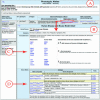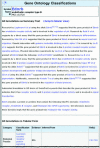The Mouse Genome Database (MGD): updates and enhancements
- PMID: 16381933
- PMCID: PMC1347448
- DOI: 10.1093/nar/gkj085
The Mouse Genome Database (MGD): updates and enhancements
Abstract
The Mouse Genome Database (MGD) integrates genetic and genomic data for the mouse in order to facilitate the use of the mouse as a model system for understanding human biology and disease processes. A core component of the MGD effort is the acquisition and integration of genomic, genetic, functional and phenotypic information about mouse genes and gene products. MGD works within the broader bioinformatics community to define referential and semantic standards to facilitate data exchange between resources including the incorporation of information from the biomedical literature. MGD is also a platform for computational assessment of integrated biological data with the goal of identifying candidate genes associated with complex phenotypes. MGD is web accessible at http://www.informatics.jax.org. Recent improvements in MGD described here include the incorporation of an interactive genome browser, the enhancement of phenotype resources and the further development of functional annotation resources.
Figures



References
-
- Näf D., Krupke D.M., Sundberg J.P., Eppig J.T., Bult C.J. The mouse tumor biology database: a public resource for cancer genetics and pathology of the mouse. Cancer Res. 2002;62:1235–1240. - PubMed

